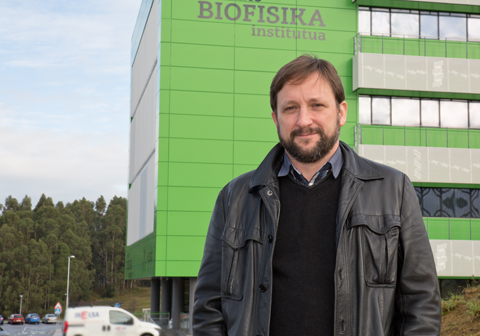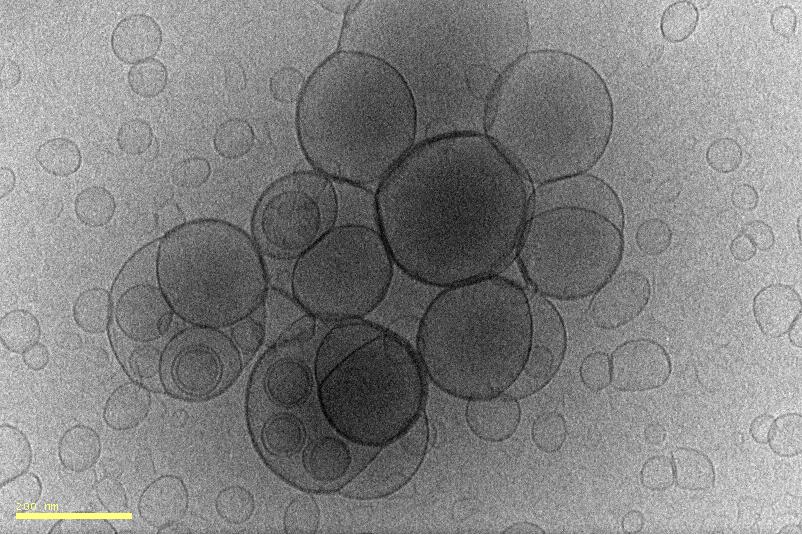Life is a process that originated 3.5 billion years ago. It emerged when the basic components of the cells that we know today, in other words, inanimate chemical molecules, gradually joined, merged, assembled themselves and interacted. At a given moment they became alive, or what amounts to the same thing, they turned into autonomous systems. As the years passed they gradually evolved until achieving their current complexity and diversity. A piece of research by the UPV/EHU is working on the start of this trajectory by studying how the chemical molecules assembled themselves so that life could begin.
Simple fats and amino acids to explain how life began
A research group of the UPV/EHU-University of the Basque Country has explored how the chemical molecules that could have given rise to life were assembled
First publication date: 29/12/2016

DNA, RNA, proteins, membranes, sugars, … cells are made up of all kinds of components. In biology, and in the studies dealing with the origin of life specifically, it is very common to focus on one of these molecules and put forward hypotheses on how life originated by analysing the specific mechanisms related to it. "Basically, these studies are looking for the ‘molecule of life', in other words, they set out to establish which was the most important molecule in making this milestone happen," said Kepa Ruiz-Mirazo, researcher in the Biophysics Unit and of the UPV/EHU's Department of Logic and Philosophy of Science. However, bearing in mind that "life involves activity among a huge variety of molecules and components, a change of approach has been taking place in recent years and research that takes into account various molecules at the same time is gaining strength," he added.
Besides emerging in favour of this fresh approach, Ruiz-Mirazo's group, in collaboration with the University of Montpellier, through an internship of the UPV/EHU PhD student Sara Murillo-Sánchez, has been able to show that interaction exists between some molecules and others. "Our group has expertise in research into membranes that are created in prebiotic environments, in other words, in the study of the dynamics that fatty acids, the precursors of current lipids, may have had. The Montpellier group for its part specialises in the synthesis of the first peptides. So when the knowledge of each group is put together, and when we experimentally blended the fatty acids and the amino acids, we could see that there was a strong synergy between them".
As they were able to see, the catalysis of the reaction took place when the fatty acids formed compartments. As they are in an aqueous medium, and due to the hydrophobic nature of lipids, they tend to join with each other and form closed compartments; in other words, they take on the function of a membrane; "at that time the membranes obviously weren't biological but chemical ones," explained Ruiz-Mirazo. In their experiments they were able to see that the conditions offered by these membranes are favourable for amino acids. "The Montpellier group had the prebiotic reactions of the formation of dipeptides very well characterised, so they were able to see that this reaction took place more efficiently in the presence of fatty acids," he added.
Bottom upwards, recreating evolution using simple molecules
Besides demonstrating the synergy between fatty acids and amino acids, Ruiz-Mirazo believes it is very important to have conducted the study using basic chemical components, in other words, molecular precursors. "Life emerged out of these basic molecules; therefore, to study its origin we cannot start from the complex phospholipids that are found in today's membranes. We have demonstrated the formation of the first coming together and formation of chains on the basis of molecular precursors. Or to put it another way, we have demonstrated that it is possible to achieve diversity and complexity in biology by starting from chemistry."
In his studies, in addition to the experimental work, Ruiz-Mirazo is working in another two spheres so in the end he is studying the origin of life from three pillars or perspectives: "firstly, we have the experimental field; another is based on theoretical models and computational simulations, which we use to analyse the results obtained in the experiments, and the third is a little broader, because we are studying from the philosophical viewpoint what life is, the influence that the conception held about life exerts on the experimental field, since each conception leads you to carry out a specific type of experiment," he explained. "These three methodologies mutually feed each other: an idea that may emerge in the philosophical analysis leads you to carry out a new simulation, and the results of the simulations mark out the path for designing the experiments. Or the other way round. Most likely we will never manage to find the answer to how life began, but we are working on it: all of us living beings on Earth have the same origin and we want to know how it happened".
Additional information
Kepa Ruiz-Mirazo is a full-time UPV/EHU researcher in the Prebiotic Membranes research group of the Biophysics Unit of the Faculty of Science and Technology, and in the Philosophy of Biology research group of the Department of Logic and Philosophy of Science-IAS of the Department of Logic and the Philosophy of Science of the Faculty of Education, Philosophy and Anthropology. This research has been conducted in collaboration with the Institut des Biomolécules Max Mousseron (IBMM) of the CNRS and the University of Montpellier. Ruiz-Mirazo's group specialises in prebiotic lipids and membranes, and that of Montpellier works to characterize the reactions in the formation of small peptides on the basis of amino acids in prebiotic environments.
Photo: UPV/EHU
Bibliographic reference
- Fatty acids' double role in the prebiotic formation of a hydrophobic dipeptide
- Chemical Science 7: 3406-3414 (online – 09 Feb 2016)
- DOI: 10.1039/C5SC04796J



